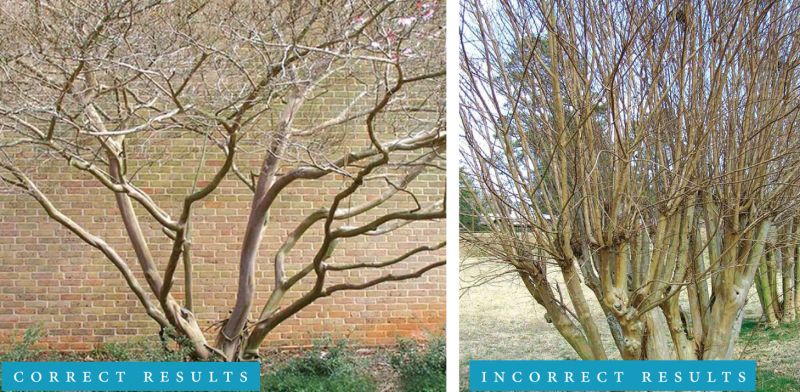
The crepe myrtle (Lagerstroemia indica) arrived in the U.S. via Charleston in 1790, imported by famed French botanist André Michaux. Today, the city’s filled with the trees, and yet a misconception remains: that each winter, their branches should be hacked off, leaving only the trunks.
In fact, when planted in the right location—in full sun, with plenty of room for the mature canopy—crepe myrtles need very little pruning. Generally, that chore should merely be done to enhance the tree’s natural appearance, including highlighting the attractive trunks. (It also increases air circulation and allows more sun to filter to the lower branches.)
You’ll need clean, sharp hand pruners and loppers for branches up to 1½ inches thick; for larger ones, use a pruning saw. If developing the shape of a new crepe myrtle, select three to five trunks and remove all others. With established plants, cut back any “suckers” growing from the tree’s base. For new and established plants alike, remove branches growing from the bottom one-third to one-half of the trunk, making clean cuts to the base of the trunk—this will lift the canopy. Remove any dead wood and branches that are crossing or rubbing.
Ask an expert: What do I do after my daffodils (and other bulbs) stop blooming?
“Taking proper care of your perennial bulbs will ensure big blooms the following year. You should remove the flower stalk so that the bulb does not put its energy into creating seeds—this lets the bulb grow larger and store more nutrition. However, resist the temptation to cut the foliage. Instead, allow it to die back naturally (some folks braid or knot the leaves, but this is not recommended). Bulbs gather nutrition through their foliage, and if you remove it prematurely, the bulbs may not have enough food stored to create a flower the following season. If you find the foliage unsightly, consider planting annuals among the bulbs.”